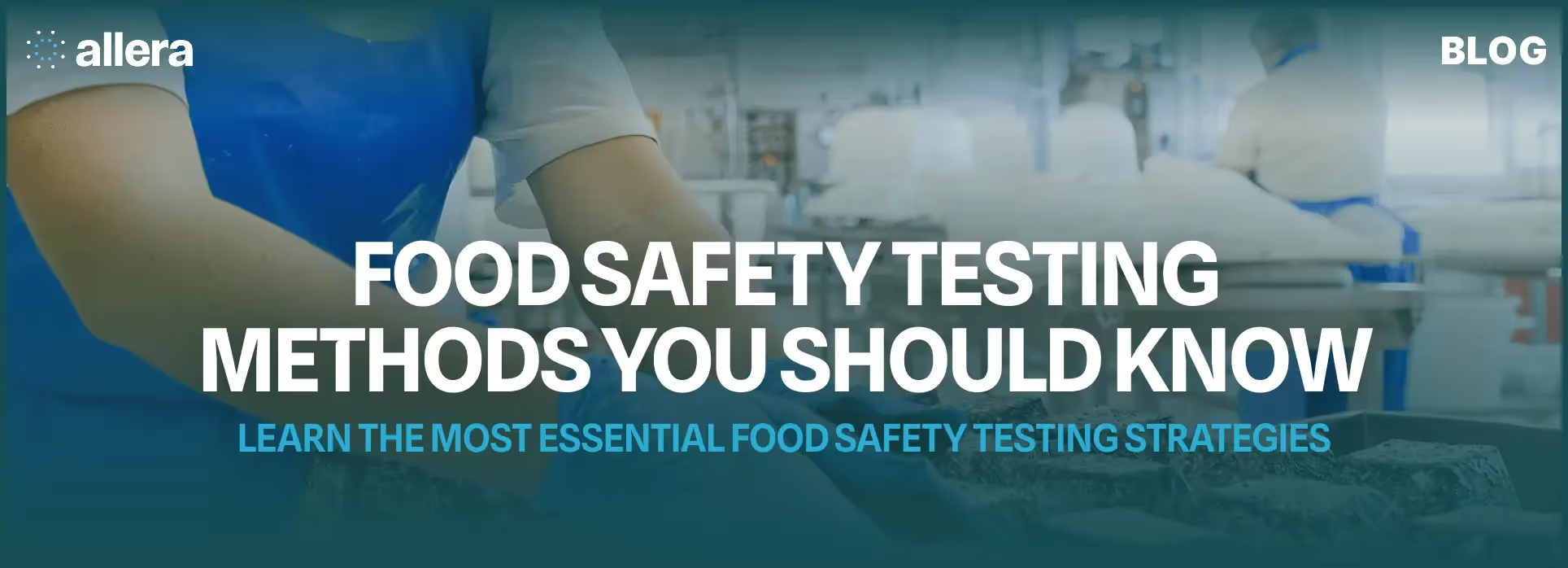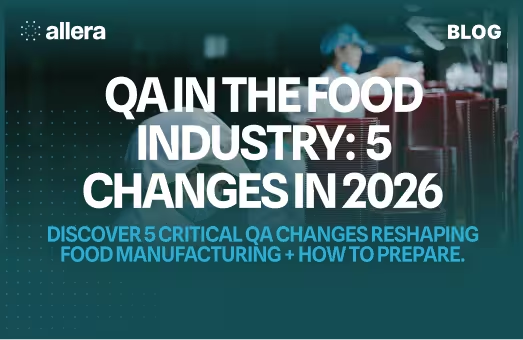

Essential Food Safety Testing Methods You Should Know

Key Takeaways:
- Food safety testing protects consumers and brands by detecting hazards before products reach the market.
- Regulatory standards from agencies like the FDA and WHO shape testing practices worldwide.
- Multiple testing methods—including microbiological, chemical, defect checks, DNA identification, and rapid detection—address different risks.
- Emerging technologies like automation, AI, blockchain, and portable devices are transforming how testing is done.
- A strong testing program requires clear objectives, validated methods, trained staff, scheduled monitoring, and accurate record-keeping.
TL;DR: This article explains how food safety testing safeguards consumers, prevents recalls, and strengthens brand trust. It covers regulatory influences, core testing methods, and the latest technological advancements shaping the industry. With a well-planned program, proper training, and modern tools, manufacturers can detect hazards early, stay compliant, and maintain high standards of quality and safety.
Understanding Food Safety Testing
Food safety testing protects consumers from hazards and preserves brand reputation. It identifies pathogens, contaminants, and defects in raw materials or finished products. This process reduces recall risks and builds public trust.
Global organizations such as the World Health Organization (WHO) estimate that foodborne diseases strike millions of people annually, causing serious illness and death (WHO – Foodborne diseases). Many incidents result from bacterial contamination, chemical hazards, or improper handling. Food safety testing helps companies detect these threats before products reach store shelves.
Brands in the food industry also protect themselves from legal and financial damages by testing. If tainted food reaches the market, lawsuits and fines can follow. By catching problems early, food manufacturers show responsibility and maintain compliance with national and international standards.
The Impact of Food Safety Regulations on Testing Practices
Regulatory bodies set standards and guidelines that drive consistent testing practices. In the United States, the Food and Drug Administration (FDA) monitors contaminants in foods, enforces regulations, and provides guidance on safety controls (see the FDA’s official site on food safety and contamination prevention). It also publishes reference manuals, such as the Bacteriological Analytical Manual (BAM) for microbiological analyses: FDA BAM.
Elsewhere, frameworks like HACCP address pathogen risks in meat and poultry. HACCP implementation in meat and poultry began in the late 1990s, leading to measurable declines in Salmonella prevalence across broilers, swine, and ground turkey (NCBI). Meanwhile, the WHO urges governments to prioritize food safety through risk-based regulatory measures and effective safety systems.
Organizations must also stay aware of local guidelines. For instance, some markets demand compliance with FSQA requirements, BRCGS audit protocols, or FSMA regulations. Each highlights the need for strict oversight at every stage of the supply chain.
Key Food Safety Testing Methods
Effective food safety testing requires multiple approaches. Each method targets specific hazards, speeds analysis, or offers better accuracy. By combining and verifying results, facilities can minimize false negatives or overlooked threats.
Microbiological Analysis
Microbiological analysis checks for pathogens, spoilage organisms, and other microbes that cause illness. The FDA’s BAM outlines standard procedures for testing bacteria like Salmonella, E. coli, and Listeria. Traditional culture-based tests remain common, but newer molecular methods, such as polymerase chain reaction (PCR), deliver faster results.
PCR replicates specific microbial DNA fragments, confirming pathogen presence in hours rather than days. Labs also use enzyme-linked immunosorbent assays (ELISA) to detect microbial proteins or toxins. Both techniques offer speed, clarity, and improved sensitivity.
Chemical Contaminant Testing
Foods can contain unwanted chemicals like heavy metals, pesticides, or additives. The FDA prioritizes arsenic, lead, cadmium, and mercury across the food supply (see FDA’s chemical contaminants guidance). Labs use atomic absorption spectroscopy, inductively coupled plasma mass spectrometry (ICP-MS), or high-performance liquid chromatography (HPLC) to spot dangerous chemical residues.
Regular testing prevents potential health crises. It also reassures regulators that manufacturers respect legal limits. Combined with food traceability programs, these tests help remove unsafe products quickly and protect vulnerable groups, including children and seniors.
Defect Level Checks
Physical or visual defects can signal substandard quality. The Food Defect Action Levels Handbook lists tolerable amounts of unavoidable material like insect fragments, mold, or stems. Exceeding these levels can trigger recalls.
Operators often rely on macroscopic and microscopic inspections. The Macroanalytical Procedures Manual (MPM) provides standardized methods for finding visual anomalies. While these issues may not always cause illness, they degrade product perception and can damage trust.
DNA-Based Species Identification
Species substitution and mislabeling can undermine quality. Seafood, for instance, is vulnerable to fraud. The FDA uses DNA sequencing for seafood species identification (FDA). Testing detects mislabeled fish or traces of allergenic species. It also helps confirm authenticity claims, such as organic or non-GMO status.
Rapid Detection Methods
Speed is critical. Quick detection of pathogens prevents widespread distribution of tainted products. Techniques like lateral flow immunoassays deliver overnight or same-day responses. On-site devices using biosensors or spectroscopy also help staff run real-time checks. This is especially useful in large-scale facilities where holding or discarding entire batches can be expensive.
Modern Innovations and Emerging Trends in Food Testing Technology
Food testing labs push for continuous improvement. They adopt next-generation solutions, expand capacity, and streamline workflows to handle rising volumes and complexity.
Automation and Robotics
Labs use robotic systems for tasks like pipetting, sample preparation, and data entry. Automation improves throughput and lowers human error. This supports higher testing frequencies and deeper checks, especially as global supply chains stretch across multiple borders.
Big Data And AI
Data analytics tools identify patterns from massive datasets, leading to earlier alerts. AI systems spot anomalies, predict spoilage, and manage scheduling. Algorithms can trigger retesting or cautionary holds when results appear unusual. Over time, these insights lead to preventive strategies and efficient resource allocation.
Blockchain For Traceability
Blockchain offers secure record-keeping, ensuring test results remain transparent and tamper-proof across the chain. When combined with existing food quality management system practices, it outlines a clear chain of custody. This can reduce recall times and simplify record reviews. Regulators, suppliers, and retailers also benefit from verified product histories.
Portable Testing Devices
Handheld devices analyze critical parameters on-site. Spectroscopy-based tools uncover chemical residues. Biosensors detect bacteria in minutes. These devices lessen reliance on remote laboratories, cutting shipping delays for perishable samples. Rapid, accurate results encourage proactive handling and real-time decision-making.
Steps To Implement A Testing Program
Setting up a robust food safety testing program requires planning, resources, and regular evaluation. Each step aims to identify gaps and strengthen processes.
1. Define Objectives and Risk Assessment
Hazard Identification
Food manufacturers must identify biological hazards like Salmonella, E. coli, and Listeria, along with chemical contaminants such as pesticide residues, heavy metals, and allergens. Physical hazards include foreign objects like glass, metal fragments, or plastic pieces that could harm consumers. Special attention should be given to allergen cross-contamination risks throughout the facility.
Regulatory Compliance
Align your testing program with FDA's Food Safety Modernization Act (FSMA) requirements, including preventive controls and environmental monitoring. USDA-FSIS standards apply to meat and poultry operations, while third-party certifications like SQF or BRC may require additional testing protocols. Consider export market requirements for international distribution.
Consumer Safety Focus
Establish testing parameters that ensure product shelf-life, verify allergen declarations, confirm nutritional claims, and maintain sensory quality standards that meet consumer expectations.
2. Select Appropriate Testing Methods
Microbiological Testing
Choose between traditional culture methods (24-72 hours) for definitive results and rapid methods like PCR or immunoassays (2-24 hours) for faster screening. Include pathogen detection, indicator organisms, and environmental monitoring protocols. Validate all methods using reference materials and participate in proficiency testing programs.
Chemical Analysis
Implement chromatography methods for pesticide residues, spectroscopy for heavy metals, and immunoassays for allergen detection. Establish detection limits appropriate for your products and regulatory requirements. Consider matrix effects when validating methods for specific food types.
Physical Inspection
Deploy metal detectors and X-ray systems for automated foreign object detection. Establish vision systems for automated quality inspection and maintain manual inspection protocols for comprehensive assessment.
3. Invest in Equipment and Training
Essential Equipment
Equip laboratories with basic microbiology tools including incubators, autoclaves, and laminar flow hoods. Add advanced instrumentation like PCR systems and mass spectrometers based on testing needs. Implement environmental monitoring equipment including air samplers and data loggers for comprehensive facility assessment.
Technology Integration
Install Laboratory Information Management Systems (LIMS) for automated data capture and trending. Use barcode systems for sample tracking and IoT sensors for real-time monitoring. Deploy mobile applications for field testing and immediate alert notifications.
Staff Training Programs
Provide comprehensive training on aseptic techniques, instrument operation, and data interpretation. Ensure staff understand current regulatory requirements and proper documentation practices. Establish corrective action protocols and maintain ongoing competency assessments through regular evaluation and external training opportunities.
4. Establish Monitoring Schedules
Risk-Based Testing Frequency
High-risk products like ready-to-eat foods require daily or per-batch testing, while medium-risk products need weekly monitoring with trend analysis. Low-risk products can follow monthly testing schedules with periodic validation studies. Adjust frequencies seasonally based on historical data and risk assessments.
Critical Control Point Monitoring
Implement continuous monitoring for thermal processing with automated data logging. Monitor pH levels in real-time for acidified products and test water activity for shelf-stable items. Ensure every package passes through metal detection systems with automatic rejection capabilities.
Environmental Monitoring
Establish zone-based testing programs with Zone 1 (direct food contact) tested daily, Zone 2 (near-product surfaces) tested 2-3 times weekly, Zone 3 (equipment surfaces) tested weekly, and Zone 4 (remote areas) tested monthly. Track trends and implement corrective actions based on predetermined triggers.
Supply Chain Testing
Verify incoming ingredient certificates of analysis and conduct random testing of critical materials. Perform regular supplier audits and implement finished product hold-and-release protocols. Conduct shelf-life studies using both accelerated and real-time methods.
5. Validate and Verify Results
Quality Assurance Measures
Use NIST-traceable reference standards for method validation and conduct duplicate testing for statistical analysis. Implement blind sample testing with known results and participate in regular proficiency testing programs. Compare different analytical methods to ensure result correlation.
Investigation Protocols
Establish clear deviation thresholds that trigger immediate investigation. Implement systematic root cause analysis using structured approaches like 5-Why methodology. Define retesting protocols for confirmatory analysis and maintain access to expert consultation when needed.
Data Integrity
Maintain electronic records with audit trails and implement sample chain of custody documentation. Establish regular equipment calibration programs and continuous temperature monitoring for storage areas. Use statistical process control including control charts and outlier detection methods.
6. Record Keeping and Continuous Improvement
Documentation Systems
Maintain master records for all testing procedures and comprehensive batch records for production lots. Document all deviations with resolution details and keep complete training records for staff competency. Implement equipment maintenance logs and calibration schedules.
Digital Management
Deploy cloud-based systems for secure data storage with backup capabilities. Create real-time dashboards for key performance indicators and automated reporting for regulatory submissions. Integrate systems with existing ERP and quality management platforms.
Advanced Analytics
Implement machine learning models for predictive analytics and anomaly detection in testing results. Use image recognition for automated visual inspection and natural language processing for certificate analysis. Deploy IoT integration for comprehensive sensor data monitoring.
Improvement Framework
Track performance metrics including testing turnaround times, first-pass yield rates, and customer complaint correlations. Conduct annual program reviews and benchmark against industry standards. Evaluate new technologies regularly and incorporate stakeholder feedback from customers, suppliers, and regulatory bodies.
Crisis Response
Establish rapid response protocols for positive pathogen results and product recall procedures. Develop supply chain contingency plans and maintain regulatory communication channels. Ensure business continuity through backup testing capabilities and alternative analytical methods.
Implementation Timeline
Months 1-3: Complete hazard analysis, establish basic testing capabilities, implement core training programs, and set up documentation systems.
Months 4-6: Deploy advanced testing methods, implement environmental monitoring, establish supplier protocols, and begin data trending.
Months 7-12: Implement predictive analytics, achieve full regulatory compliance, establish improvement processes, and complete staff certifications.
Year 2+: Deploy advanced AI systems, conduct industry benchmarking, establish thought leadership, and maintain continuous technology evaluation.
Conclusion
Food safety testing safeguards consumer health and maintains brand integrity. It requires consistent attention, technical skill, and alignment with dynamic regulations. By choosing the right methods, adopting modern devices, and integrating big data approaches, producers can minimize risk and uphold global standards.
A robust testing program also supports larger quality frameworks, such as FSQA. By analyzing trends and leaning on verified data, teams can resolve concerns before consumers ever see them. That proactive approach leads to fewer recalls and a stronger reputation.
Allera Technologies supports businesses seeking to enhance safety practices. Its solutions help streamline testing strategies and reinforce compliance, bolstering each step of food production. This thorough approach makes safe food a standard, not a luxury.
FAQs
What are the top 3 most common food allergens?
The top 3 most common food allergens are:
Milk - Most prevalent food allergy, especially in children
Eggs - Common childhood allergy that many outgrow by adulthood
Peanuts - Frequently causes severe reactions and tends to persist into adulthood
These three allergens account for the majority of allergic reactions reported to food manufacturers and regulatory agencies.
What does PPDS stand for?
PPDS stands for Pre-packed for Direct Sale. This refers to food items that are packaged on the same premises where they are sold directly to consumers, such as sandwiches made in-store, bakery items wrapped on-site, or prepared salads packaged at the point of sale.
PPDS foods require allergen labeling but have different regulatory requirements than pre-packaged foods manufactured off-site.
What is lupin in food?
Lupin is a legume seed used as a flour substitute and protein ingredient in baked goods, pasta, and processed foods. Related to peanuts and soybeans, lupin can trigger allergic reactions, particularly in individuals with peanut allergies due to cross-reactivity. Common in European products, lupin flour provides high protein content and gluten-free properties. Food manufacturers must declare lupin as an allergen on labels in many jurisdictions, including the EU and Australia.
What are the 4 C's of food safety?
The 4 C's of food safety are:
Clean - Wash hands, surfaces, and equipment frequently
Cook - Heat foods to safe internal temperatures to kill harmful bacteria
Chill - Refrigerate perishable foods promptly and maintain proper cold chain
Cross-contamination - Separate raw and cooked foods to prevent bacterial transfer
How does the FDA determine food safety?
The FDA determines food safety through facility inspections, product sampling, adverse event monitoring, and regulatory oversight. Inspectors evaluate Good Manufacturing Practices (GMPs), review HACCP plans, and verify preventive controls under FSMA. The agency analyzes samples for contaminants, conducts risk assessments on new ingredients, and monitors foodborne illness outbreaks. FDA also reviews scientific data, establishes safety standards, and issues guidance documents based on current research and risk analysis.
What are the 14 main food allergens?
The 14 main food allergens recognized in food labeling regulations include:
• Milk
• Eggs
• Fish
• Crustacean shellfish
• Tree nuts
• Peanuts
• Wheat
• Soybeans
• Sesame
• Celery
• Mustard
• Lupin
• Molluscs
• Sulphur dioxide and sulphites (when present above 10mg/kg)
Note that allergen lists vary by region - the US recognizes 9 major allergens while the EU recognizes all 14.
What are the 4 basic rules of food safety?
The 4 basic rules of food safety are:
Keep food clean: Maintain proper hygiene and sanitation practices
Separate raw and cooked foods: Prevent cross-contamination between products
Cook food thoroughly: Achieve safe internal temperatures to eliminate pathogens
Keep food at safe temperatures: Maintain proper hot and cold holding temperatures
How is food safety tested?
Food safety testing involves multiple methods to detect contamination and ensure product quality. Microbiological testing identifies harmful bacteria like Salmonella, E. coli, and Listeria through culture methods or rapid detection systems. Chemical testing screens for pesticide residues, heavy metals, allergens, and adulterants using techniques like HPLC and mass spectrometry. Physical testing examines products for foreign objects, temperature compliance, and packaging integrity. Testing occurs at critical control points throughout production, from raw materials to finished products.
What is a USDA food safety assessment?
A USDA food safety assessment evaluates meat, poultry, and egg processing facilities to ensure compliance with federal food safety regulations. FSIS inspectors conduct hazard analysis reviews, verify HACCP plan implementation, and assess sanitation standard operating procedures (SSOPs). The assessment examines facility design, equipment maintenance, personnel hygiene practices, and record-keeping systems. Facilities receive ratings and must address any identified deficiencies to maintain inspection eligibility.




.avif)

.avif)

.avif)
.avif)

